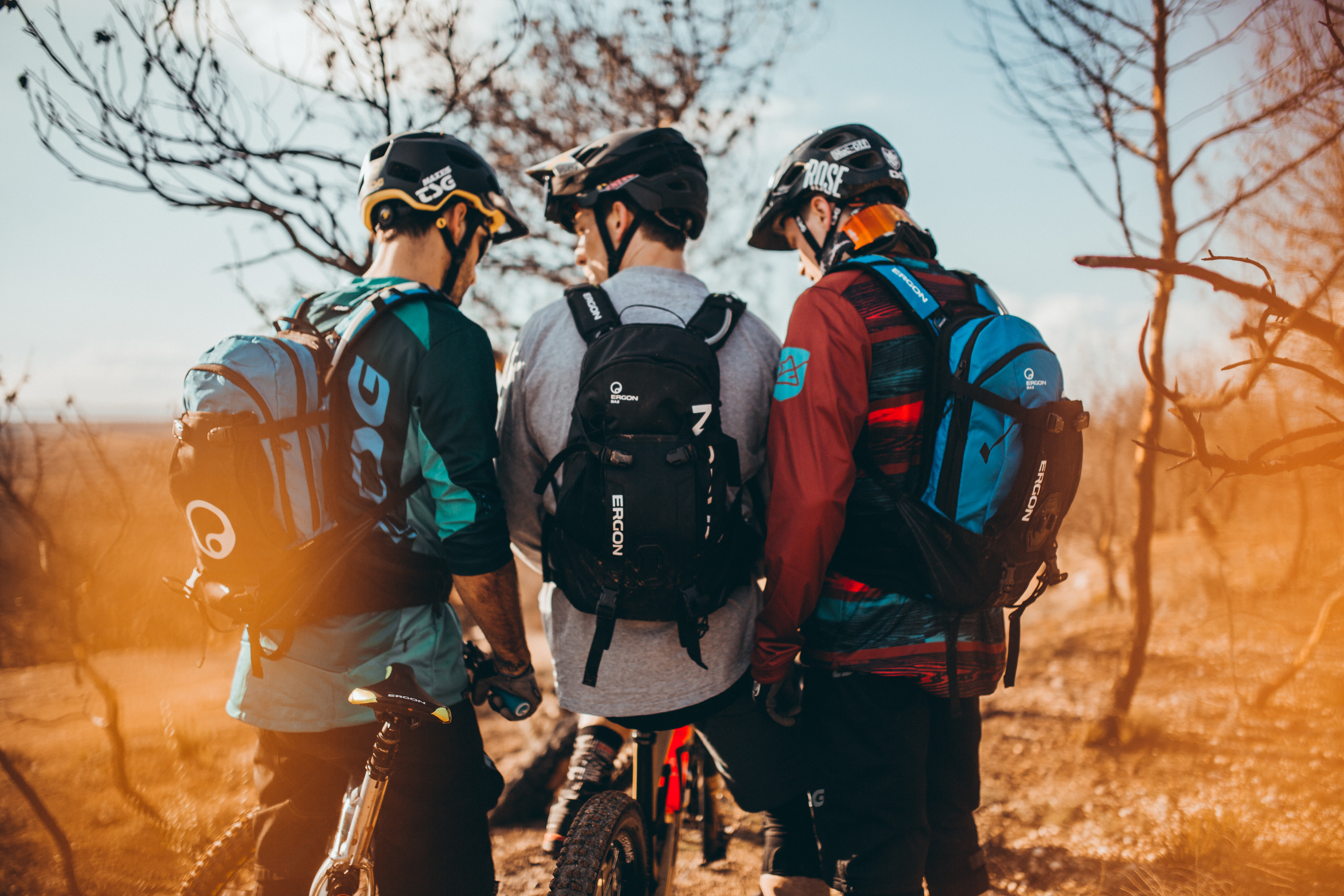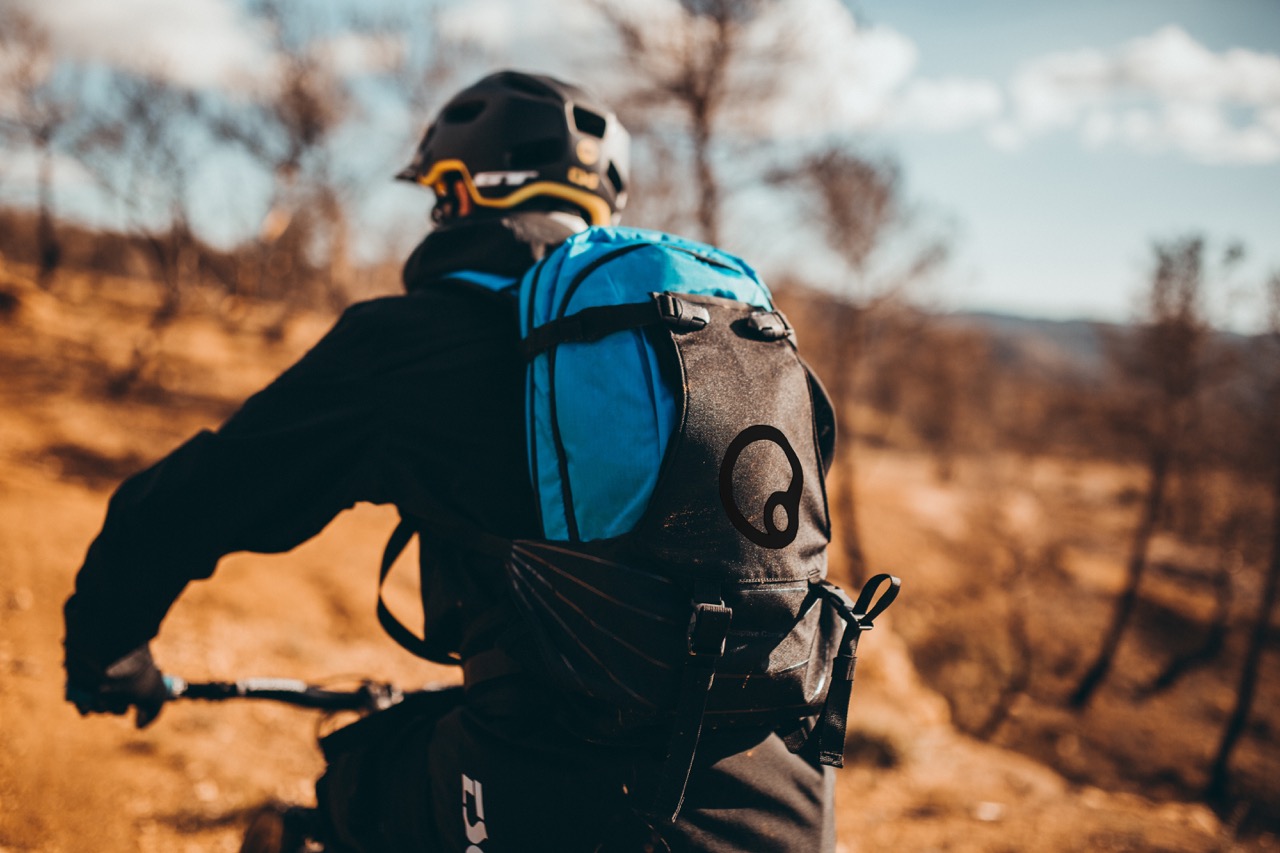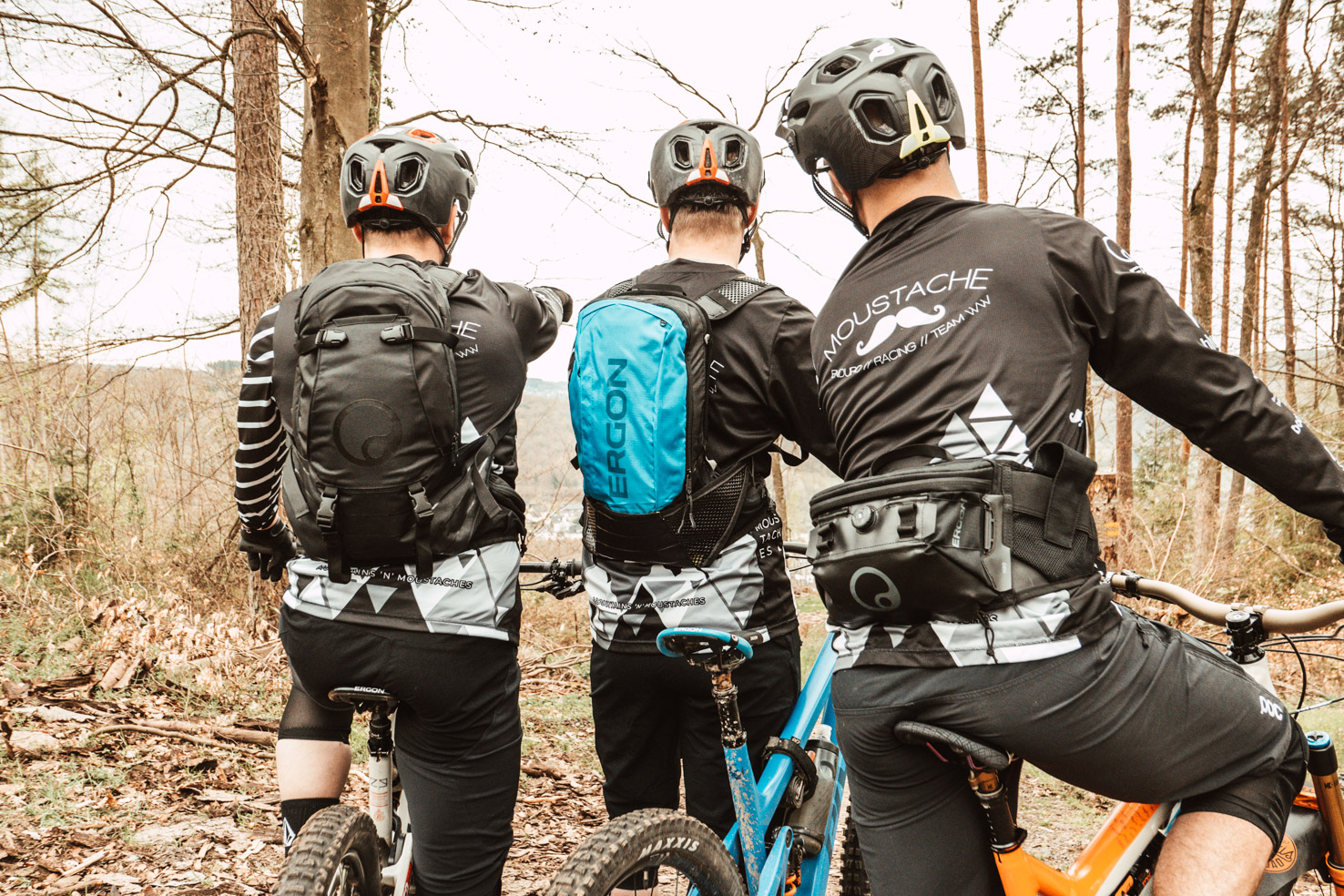Adjusting Your MTB Backpack Perfectly

Adjusting Your MTB Backpack Correctly – Whether it's a Transalp, multi-day tour, or day trip – here you'll find a practical guide to optimal adjustment!
Adjusting Your MTB Backpack Correctly
Panniers, bikepacking equipment, or bike backpack? How you carry your belongings while cycling is not a matter of belief but rather depends on the specific cycling discipline. In mountain biking, backpacks have become the norm, mainly to avoid affecting the handling of the MTB with attachments and altered weight distribution. However, this also means that the rider must carry the weight of spare tubes, shock pump, rain jacket, protectors, and provisions.
This amounts to five to a maximum of thirty liters of packing volume or two to about twelve kilos of weight – distributed across a hip belt and two shoulder straps. Even with a good backpack, it can significantly reduce the fun of riding if you forget to adjust your MTB backpack correctly. The comfort of carrying it is only marginally affected by whether it's packed for a day trip, multi-day tour, or bike park.
A poorly fitting or unergonomic backpack can cause tension and chafing and restrict movement, impairing riding safety. Unwanted movements of the backpack on the back can also affect riding maneuvers and, in the worst case, cause falls!
You can find detailed help here, including a packing list, proper packing technique, and information on what you need urgently and what you can leave at home.

What fit and size should the MTB backpack have?
The volume of the perfect backpack determines its packing list. The model should be just as large as necessary for maximum riding fun. Important: A hiking backpack is not suitable for a mountain bike tour and generally not for cycling. The load distribution is entirely different. The carrying system is designed less for freedom of movement, and with the typical MTB posture, the backpack and helmet quickly get in each other's way. A unique backpack for enduro, freeride, trail, or cross country sits fundamentally lower on the back and fits more snugly. And – for high-speed disciplines, back protectors are part of the equipment.
„Adjusting the MTB backpack brings great gain in comfort and joy. Without this adjustment, it's more of a matter of luck if the backpack fits.“
What should I pay attention to when adjusting the backpack?
The first important step in adjusting the back system and thus on the way to the best-carrying comfort is buying in the right length. Many models can be adjusted step by step regarding back length; for example, Ergon models can be adjusted in four lengths. If the model does not have this feature, you should measure your back length or know it when buying.

Measuring Back Length
You need two prominent points on your back to determine it, so working with a helper is advisable.
- While standing, place your chin on your chest and run a finger from the skull down the middle of the spine. At shoulder level, the seventh cervical vertebra (C7) protrudes more or less noticeably; this is point 1.
- Also, while standing, feel the upper edge of the pelvic bone from the side and follow it horizontally to the middle of the back. Where this line intersects with the spine is point 2.
- Measure the distance between the two points along the back with a tape measure; a rigid measuring tool might not follow the curvature of the lumbar spine.
Note: Not all manufacturers' back lengths correspond to the carrying system's. Manufacturers provide either corresponding tables for conversion or classification into clothing sizes.
When adjusting the MTB backpack, adjusting the back length is step one. Most bike backpacks use Velcro for this. Please press the Velcro surfaces firmly together again after adjusting. Secondly, you should loosen all straps on the backpack, not just the shoulder straps. Now follows the adjustment to the rider.
Most Ergon models offer an additional option to adjust the back system to the body. A flexible aluminum rail, horizontally embedded above the hip belt into the carrying system, can be shaped to follow the body's contour exactly. By adapting to the ergonomics of bikers, the pads align ideally on the back. They lie flat on the respective correct spots and simultaneously keep the ventilation channels open. Additionally, the angled hip pads provide more lateral support. This prevents annoying pendulum movements, especially when pedaling out of the bike saddle.

How does an MTB backpack fit perfectly?
Despite a different cut, the cycling backpack sits similarly to the one for hikers, mainly on the hips and hardly on the shoulder straps. Therefore, the hip belt is closed first after putting it on. Tip: When adjusting, the backpack should not be empty. Both volume and weight correspond to the setup during the tour.
The backpack's load sits perfectly when the hip belt runs two-thirds of its width above and one-third below the upper edge of the pelvis. This bony edge can best be felt on the front outer top of the pelvis. The hip belt can be tightened if the hip pads lie precisely on it. Its tension should be such that the entire weight can rest on the hips but simultaneously does not restrict the pedaling movement.
As tight as necessary, as loose as possible
The actual shoulder straps are tightened in the next step so that their pads just lie flat. They should carry almost no load and allow entire upper body and shoulder movement. As a visual confirmation, Ergon backpacks have green markings that should now lie in the area of the collarbones when the backpack is correctly adjusted. Additionally, Ergon models eliminate the need to change the strap width to the shape of the shoulders, as the straps are freely movable at the top and automatically follow the anatomy.
Finally, the chest strap must be closed and brought to light tension. It should only prevent the shoulder pads from slipping off the shoulders due to movements. Under no circumstances should it restrict breathing.
On large bike backpacks, you will find so-called load adjustment straps at the upper end of the shoulder straps, which pull the load towards the body, sometimes also called load control straps. The same applies to them: tighten just enough so that the backpack does not swing sideways at the top but simultaneously allows the shoulder girdle sufficient freedom for all riding maneuvers. The main weight must remain low on the back.

„Adjusting a backpack empty or not at all costs so much fun on the bike later. That a specialist dealer competently deals with the customer here is one of the signs of a well-trained store.“
Additional adjustable features on the backpack
The more intense the biking gets, the tighter the load must sit on the body. Besides good packing techniques, suitable compartments for heavy items like hydration bladder, chain links, batteries for the bike, or chargers on multi-day tours help. Smaller items like repair kits, tire levers, pumps, or nutrition bars are best kept in elastic inner pockets or wrapped in clothing. A third option to avoid the movement of loose items is straps, i.e., adjustable straps, with which you can fix the load to the back panel. Opening and closing, of course, extend the time to access the inner compartments.
Ergon has also equipped its backpack models with a clever add-on for more carrying comfort. The lower ends of the shoulder straps run around the backpack and create tension on the lower part of the main compartment and the side pockets, exactly where the heavy items are packed. This efficiently prevents sideways swinging while riding without worrying about extra tension or compression straps.

Adjustment is good – Control is better
Theory and practice are still different, even when adjusting your MTB backpack correctly. Therefore, checking whether the backpack fits correctly is advisable, especially before multi-day tours or technically demanding courses. The fit is critical with new backpacks or a significantly different packing list – and it's quick to do:
- Jump up and down; the hip belt should not slide down over the pelvic edge despite the load. If it does, tighten it a bit more.
- Lean forward with your upper body as you would on the bike, and stretch your hands forward; the shoulder straps should neither lose contact with your shoulders nor cut in.
- In a cycling position, take several deep breaths in and out; the chest strap must not hinder the expansion of your chest.
- Tilt your head as far to the side, especially backward, as possible; the helmet and backpack should not touch.
- The chest strap is usually adjustable in height; it should not rub against your nipples or sit so close to your neck that it feels like you are being strangled.
- In the riding position, try leaning forward, sideways, and twisting your torso; the mobility of your upper body and torso should not be restricted.